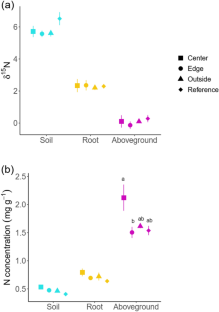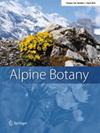Effects of an actinorhizal shrub on the nitrogen status of the soil and neighboring plants in an alpine meadow of the Tibetan Plateau
Abstract
With ongoing climate change and increasing human activities, shrub expansion has been observed worldwide. Alpine meadows are one of the ecosystem types that are sensitive to shrub expansion. This study aimed to investigate the effects of an actinorhizal shrub species on nitrogen (N) status of the soil and other plants in the alpine meadow ecosystem. We measured the 15N natural abundance and N concentration of different tissues of Hippophae tibetana, and examined its effects on the 15N natural abundance and N content of the soil and neighboring plants at different locations surrounding the shrub clumps in an alpine meadow in the Qinghai-Tibet Plateau. The results show that the δ15N in branches and roots of H. tibetana was much lower, and N concentration much higher, than that of other plants. δ15N of the plants and soil surrounding the shrub clumps was not significantly altered. Underneath the shrub canopy, due to the N-rich leaf litter of H. tibetana, N content of neighboring plants significantly increased compared to plants at other locations. However, the aboveground biomass of neighboring plants was marginally lower underneath the canopy than outside. These results suggest a minor N-facilitation effect of this actinorhizal shrub on the soil and neighboring plants through its N-rich leaf litter. However, the facilitation effect was not enough to offset the negative effect of the shrub on its neighboring plants due to competition of other resources.


 求助内容:
求助内容: 应助结果提醒方式:
应助结果提醒方式:


